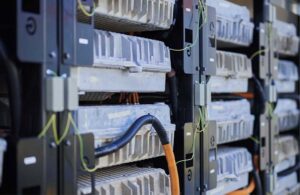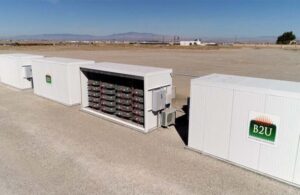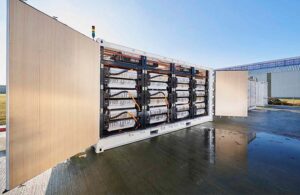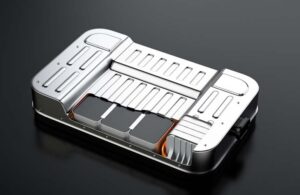 Uptake of millions of Electric Vehicles in such a short amount of time is slowly accumulating a new generation of battery as well as electric vehicle waste. With tons of electric vehicles getting scrapped in the coming years, the batteries that power them can still be exploited despite their old nature as Second-Life Batteries.
Uptake of millions of Electric Vehicles in such a short amount of time is slowly accumulating a new generation of battery as well as electric vehicle waste. With tons of electric vehicles getting scrapped in the coming years, the batteries that power them can still be exploited despite their old nature as Second-Life Batteries.
This has generated a new class of market segment in the automotive world wherein recycling companies can harvest valuable materials from old EV batteries to make new ones.
However, before they get recycled used batteries can be given a second life on the electricity grid.
Defining the word, Second-Life Batteries one can say that they are used batteries from electric vehicles (EVs) that have lost a certain percentage of their capacity and are no longer efficient enough for automotive use.
However, these Second-Life Batteries still have significant energy storage capacity and can be repurposed for other applications.
Industries Utilizing Second-Life Batteries
Counting some of the possible Second-Life Batteries Market and applications include,
Energy Storage
 Second-life batteries can be used for energy storage applications, such as stationary batteries in residential or commercial buildings, microgrids, and utility-scale energy storage. These batteries can store excess renewable energy generated by wind or solar power systems and release it when the energy demand is high.
Second-life batteries can be used for energy storage applications, such as stationary batteries in residential or commercial buildings, microgrids, and utility-scale energy storage. These batteries can store excess renewable energy generated by wind or solar power systems and release it when the energy demand is high.
Electric Vehicle Charging Stations
Second-life batteries can also be used for electric vehicle charging stations. These batteries can store energy during off-peak hours and release it during peak hours when electric vehicles need to be charged. This can help to reduce the peak demand for electricity and lower the overall cost of electricity for consumers.
Backup Power Supply
Second-Life Batteries can also be used for backup power supply systems for critical facilities such as hospitals, data centers, and airports. These batteries can provide an uninterrupted power supply in the event of a power outage, ensuring that critical systems remain operational.
Portable Power Supply
Second-Life Batteries can be used to create portable power banks for camping, outdoor activities, or emergencies. These batteries can be used to power small electronic devices such as smartphones, tablets, and laptops.
Second-Life Batteries Market & Companies
 Second-Life Batteries Market is growing rapidly as more and more EVs are coming on the road. Second-life batteries have the potential to provide cost-effective energy storage solutions for a variety of applications, which can help to accelerate the adoption of renewable energy and reduce greenhouse gas emissions.
Second-Life Batteries Market is growing rapidly as more and more EVs are coming on the road. Second-life batteries have the potential to provide cost-effective energy storage solutions for a variety of applications, which can help to accelerate the adoption of renewable energy and reduce greenhouse gas emissions.
According to some reports, Second-Life Batteries Market is expected to grow significantly in the coming years due to the increasing adoption of electric vehicles and the need for sustainable energy storage solutions.
The global Second-Life Batteries Market is forecasted to reach US$7B in value by 2033.
Several companies are involved in the Second-Life Battery Market, including:
Tesla: Tesla has been a leading player in the Second-Life Battery Market, primarily through its acquisition of SolarCity. The company has repurposed used EV batteries to create energy storage systems for residential and commercial use.
BMW: BMW has launched a program to repurpose used EV batteries for stationary energy storage applications. The company has partnered with several energy storage providers to create second-life battery systems.
Nissan: Nissan has also launched a program to reuse used EV batteries for energy storage applications. The company has partnered with several energy storage providers to create second-life battery systems.
BYD: This Chinese automaker has been repurposing used EV batteries for stationary energy storage applications. The company has partnered with several energy storage providers to create second-life battery systems.
LG Chem: LG Chem is a South Korean chemical company that has been involved in the second-life battery market. The company has partnered with several energy storage providers to create second-life battery systems.
In a Nutshell…
 In summary, as Second-Life Batteries Market starts stabilizing, producers of electric vehicle batteries will see the value in retaining ownership of their product, leasing it to electric vehicles owners, and to see profits when the battery is no longer fit for use in the car which the gets moved onto a second-life application.
In summary, as Second-Life Batteries Market starts stabilizing, producers of electric vehicle batteries will see the value in retaining ownership of their product, leasing it to electric vehicles owners, and to see profits when the battery is no longer fit for use in the car which the gets moved onto a second-life application.
Second-Life Battery Market is still in its early stages, but it has significant potential for growth in the coming years as more EVs reach the end of their lifespan.
